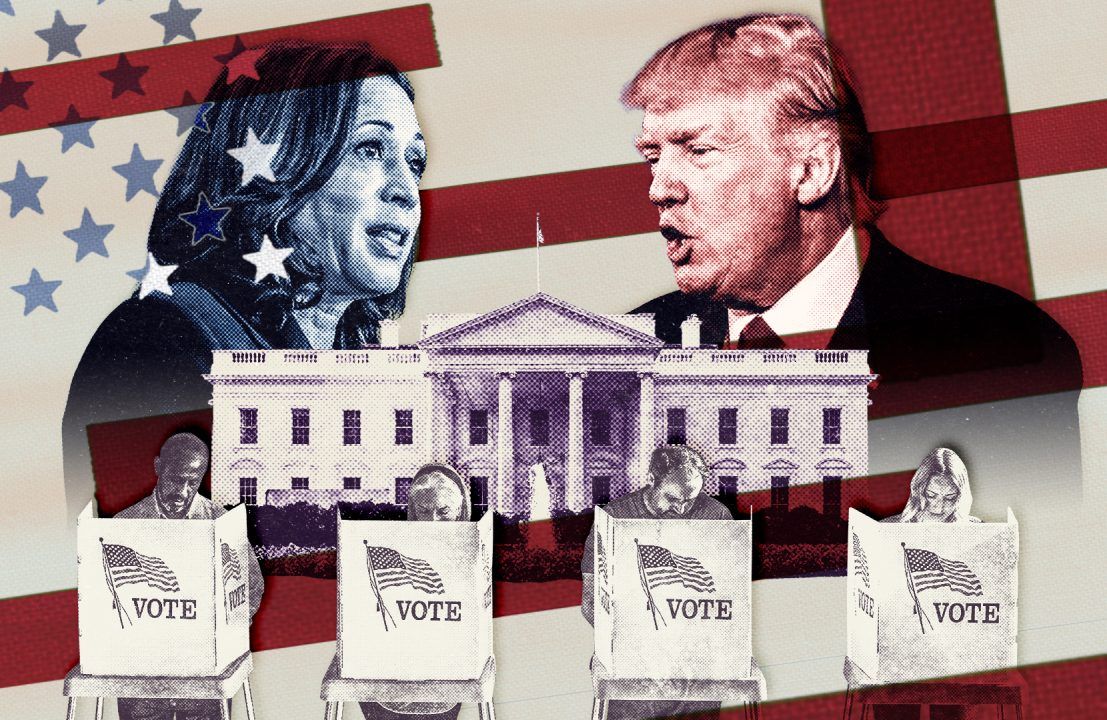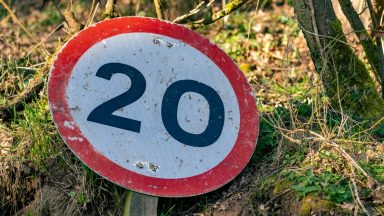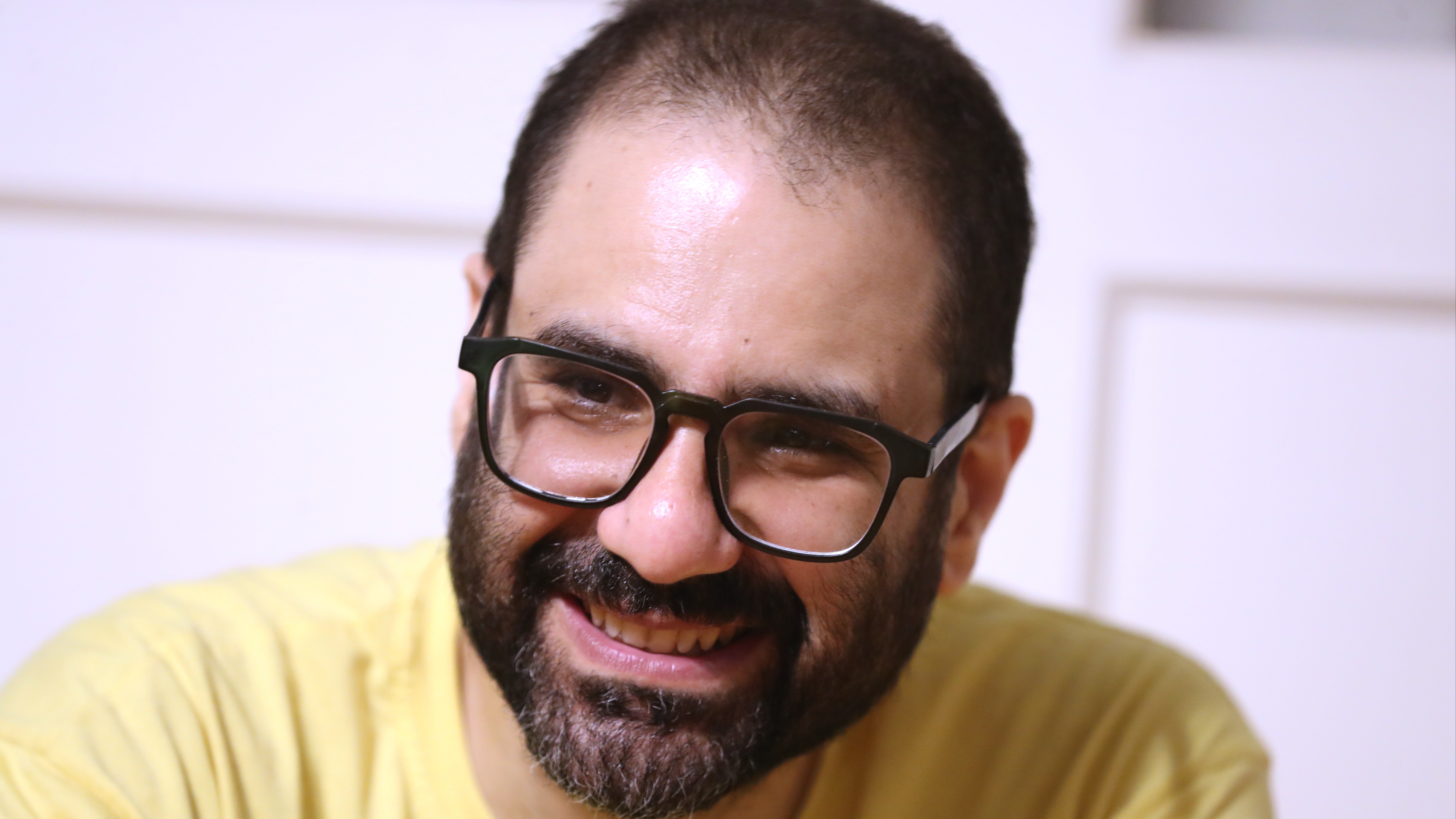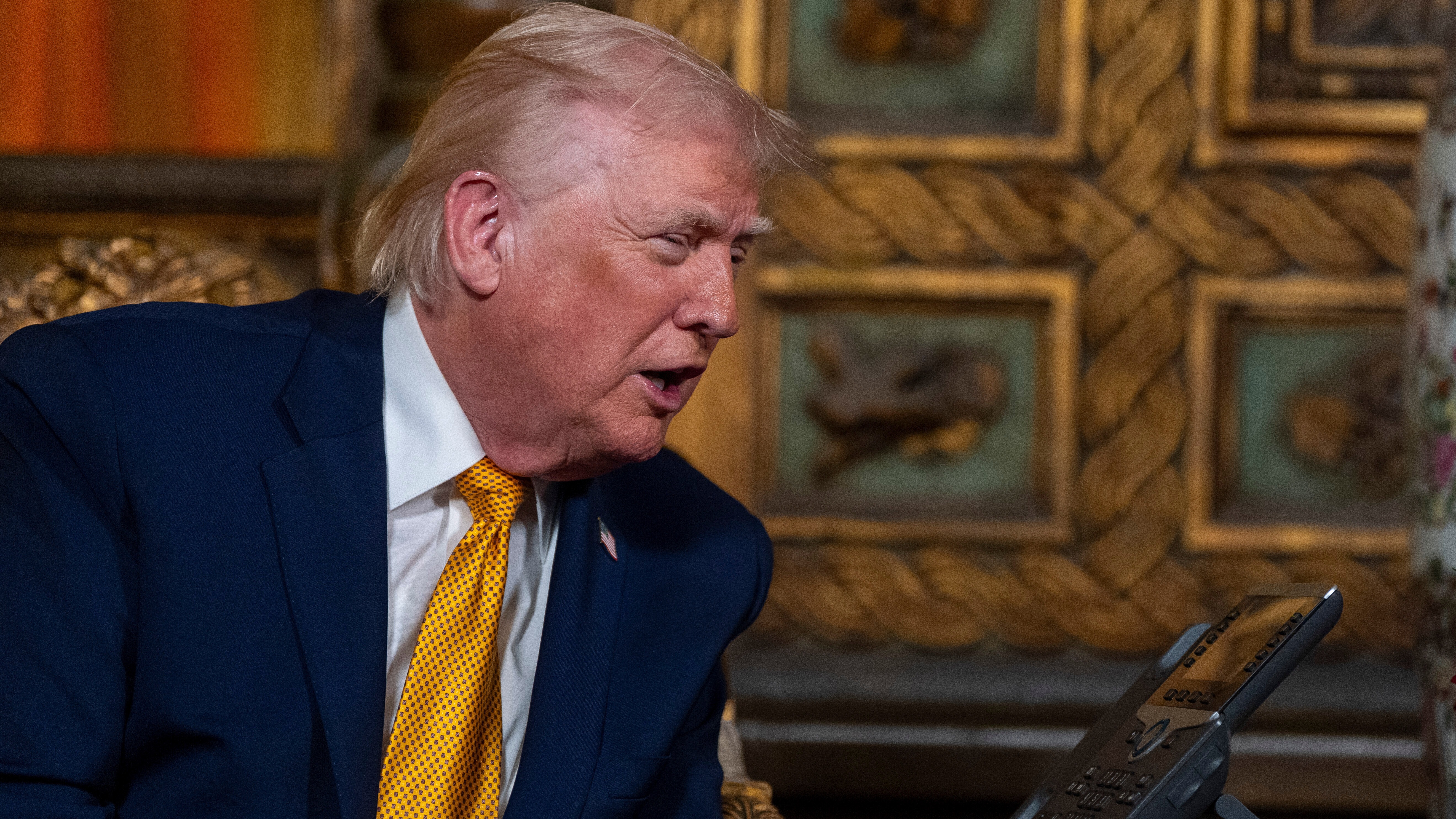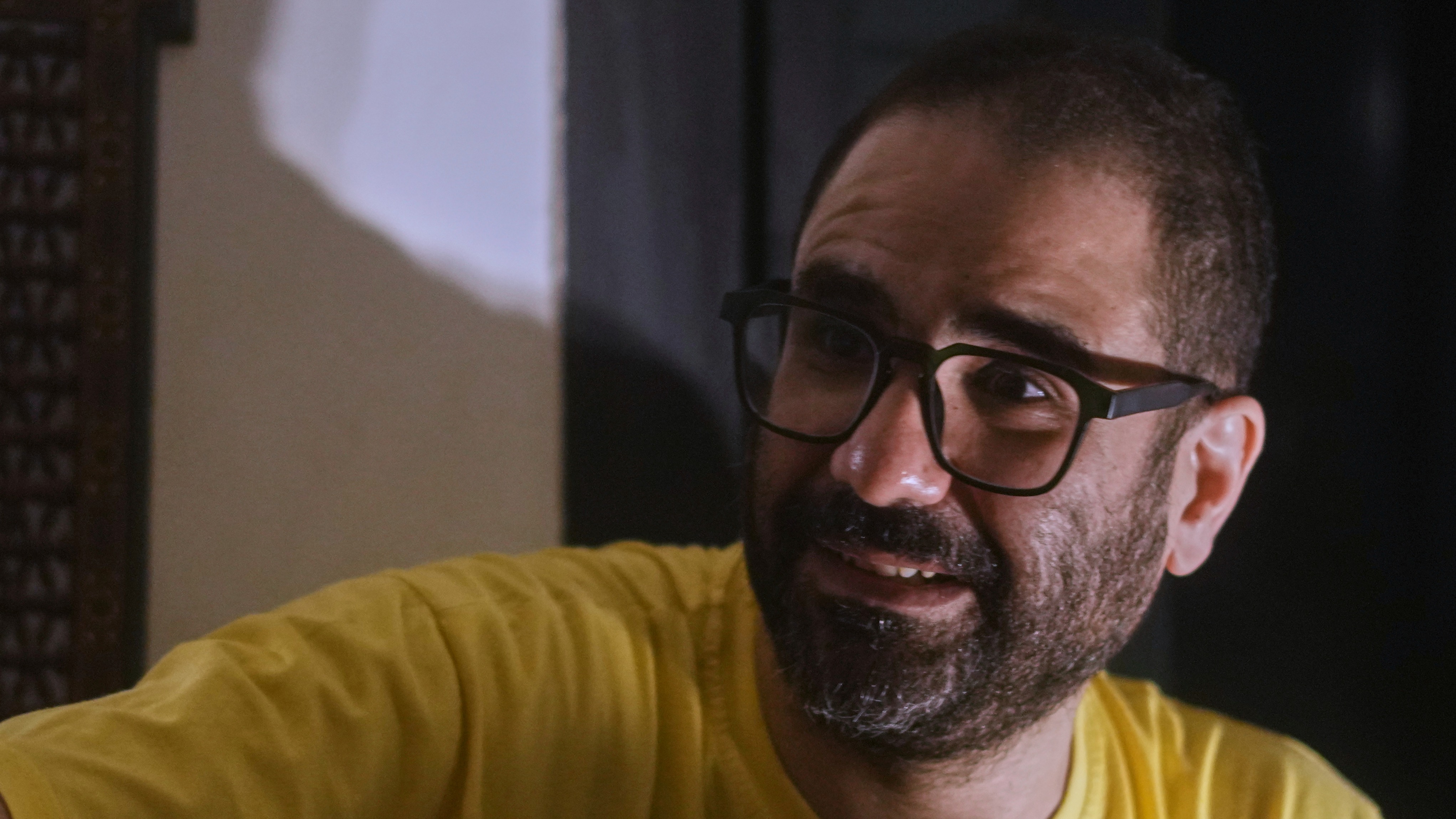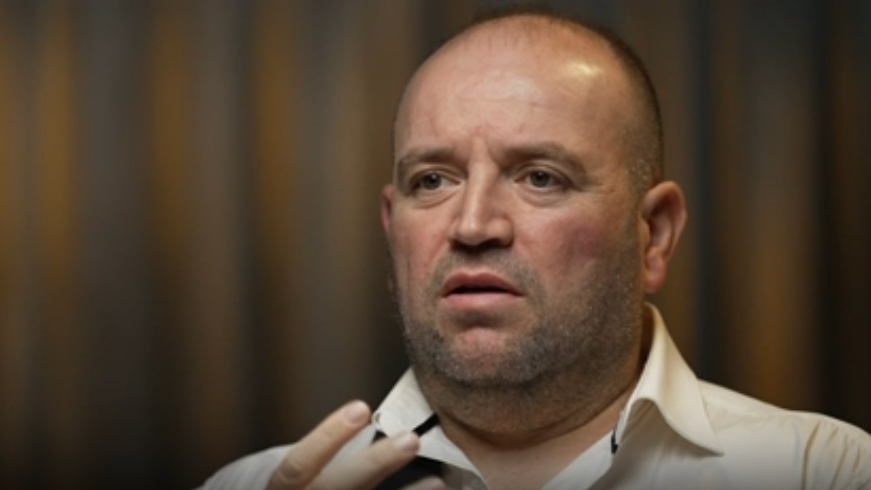Key Points
-
 Millions of Americans voting for the next President of the United States
Millions of Americans voting for the next President of the United States -
 Either Kamala Harris or Donald Trump will be the next incumbent of the White House
Either Kamala Harris or Donald Trump will be the next incumbent of the White House -
 Harris vying to become the country’s first female president
Harris vying to become the country’s first female president -
 Trump victory would make him the first incoming president to have been indicted and convicted of a felony
Trump victory would make him the first incoming president to have been indicted and convicted of a felony -
 Election likely to be decided by seven swing states – Wisconsin, Michigan, Pennsylvania, Arizona, Georgia, Nevada and North Carolina
Election likely to be decided by seven swing states – Wisconsin, Michigan, Pennsylvania, Arizona, Georgia, Nevada and North Carolina -
 Some states might not be called for Harris or Trump for hours, possibly days.
Some states might not be called for Harris or Trump for hours, possibly days.
The United States is choosing its next president and polls suggest Donald Trump and Kamala Harris are neck-and-neck in the race to be the next incumbent of the White House.
Millions of Americans are heading to cast their ballots on Tuesday, with most states opening polling stations at 7am local time.
More than 82 million have already voted in a seismic election that could impact generations to come.
The stakes are particularly high as key issues like abortion rights, the war in Ukraine and the Middle East dominate the discourse in a fierce battle between two candidates offering very different outlooks.
A victory by either side would be unprecedented.
If Trump wins, he will become the first incoming president to be indicted and convicted of a felony. He will also gain the power to end other federal investigations pending against him.
He would also become only the second president in history to win non-consecutive White House terms, after Grover Cleveland in the late 19th century.
Meanwhile, Harris is vying to become the first woman, first black woman and first person of South Asian descent to reach the Oval Office — four years after she broke the same barriers in national office by becoming Joe Biden’s second in command.
STV News looks at how a dramatic night is set to unfold.
How does the US election work?
A total of 270 electoral votes are needed to win the US presidential election.
Each state is allotted a fixed number of electoral votes (EVs) based on its population size.
Wyoming has the smallest population and, therefore, three votes, whereas California has the largest, so it gets 54 electoral votes.
Whoever wins the popular vote in a state also wins all of that state’s EVs (with two exceptions, Maine and Nebraska).
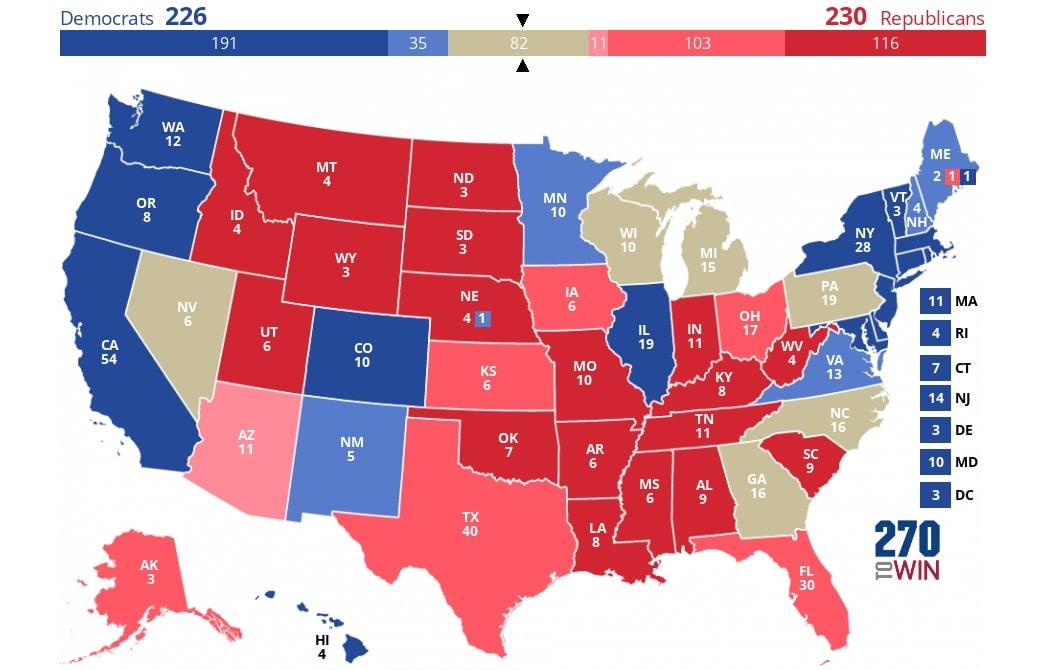 270towin
270towinWhat are the key swing states?
The election is likely to be decided by seven swing states. These are states that have voted for both the Democratic and Republican Party in the past and may be likely to change again.
These states are the so-called “Rustbelt”: Wisconsin, Michigan and Pennsylvania in the north. Further south, the “Sunbelt” with Arizona and Nevada to the west and Georgia and North Carolina in the east, may decide the winner.
The candidate who gets the most popular votes does not necessarily win the election. In 2016, more Americans voted for Hilary Clinton, yet Trump won the Electoral College.
How will the night play out?
Polls will close at different times across the United States, usually on the hour.
As soon as this happens, a state can be “called” by the US news networks for either Harris or Trump.
The first polls close at 6pm eastern time (11pm UK time) on Tuesday evening and the last at 1am eastern (6am UK) early on Wednesday.
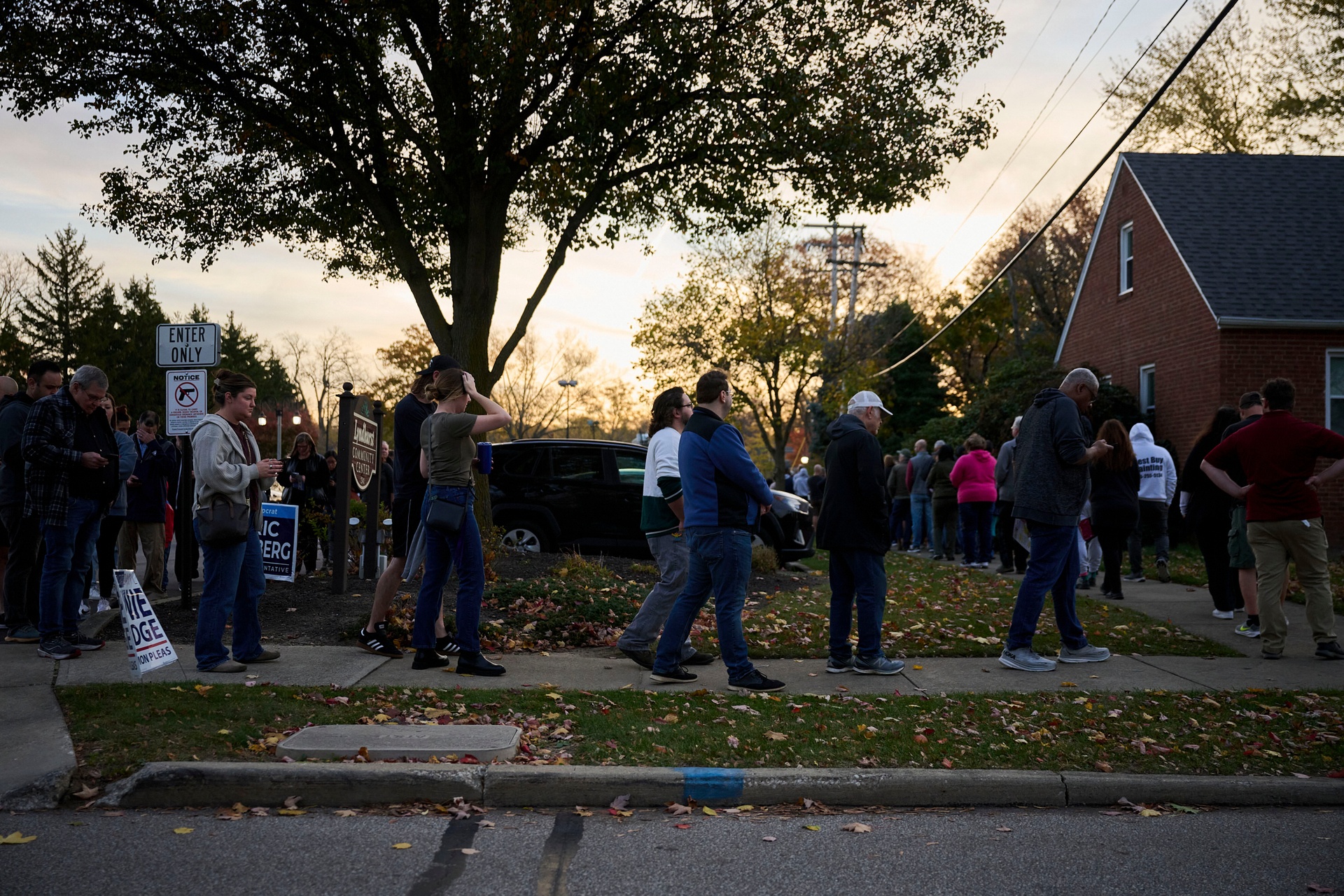 Getty Images
Getty ImagesFor those states that traditionally vote solidly Republican (such as Wyoming and Oklahoma) or Democrat (California and New York), it is likely to happen almost the moment the polls close, before a single vote has been officially counted.
However, where the race is expected to be close, in so-called “swing states” such as Arizona, Georgia, or Pennsylvania, the networks will want to wait until most votes are actually counted and reported before making a projection.
Because of this, some states might not be called for Harris or Trump for hours, possibly days.
Any precedent for a tight race?
Yes, the 2000 election between George W Bush and Al Gore was not decided for five weeks when the US Supreme Court voted to end Florida’s recount.
News networks carried footage of scrutineers examining “hanging chads” – the small pieces of paper created when a hole was punched in a ballot on the voting machines of the time.
When some voters punched their ballots, the chad did not fully separate from the ballot, making their preferences unclear.
In other cases, an indentation had been made in the ballot, but it had not been punched through, which was known as a pregnant or dimpled chad.
The turmoil only ended when the US Supreme Court ruled in Bush’s favour, saying that the recount would cast “a needless and unjustified cloud” over his legitimate election.
Is there a chance of unrest?
Washington is braced for potential civil disorder after the storming of the US Capitol by pro-Trump insurrectionists following Biden’s 2020 election win.
On January 6, 2021, around 100 Trump supporters stormed the US Capitol building after the former president urged them to descend on the seat of the country’s Congress.
The rioters violently broke into the building, attacked police officers and disrupted the congressional counting of electoral votes.
Federal prosecutors alleged that Trump pressured officials to reverse the results, knowingly spread lies about election fraud and sought to exploit the Capitol riot on January 6, 2021 to delay the certification of Biden’s victory and stay in power.
Some had speculated he would be charged with insurrection or aiding insurrection, but that is not one of the charges facing Trump.
The Supreme Court ruled presidents have broad immunity from criminal prosecution for official acts they undertake.
The revised indictment retains four criminal counts, which now relate to the former president’s status as a political candidate rather than a sitting president.
Trump faces sentencing later in November after he was convicted of 34 felony counts of falsifying business records over the payment of hush money to adult film actress Stormy Daniels days before the 2016 election.
When will states declare results?
Tuesday, November 5
11pm GMT (6pm EST): Kentucky and Indiana are often the first states to be declared. These are Republican strongholds so Trump should be the first candidate to pick up votes.
After this, we can expect a steady stream of declarations.
Wednesday, November 6
12am GMT (7pm EST): The first results for Harris will come in as the polls close in Virginia and Vermont at midnight. South Carolina, a Republican stronghold, should also declare results.
The polls for Florida and Georgia also close, however, these states are unlikely to be declared straight away as it’s expected to be close.
1am GMT (8pm EST): Polls close in many of the safe states around this time with results from Republican strongholds like Alabama and Oklahoma expected and strong Democrat states like Connecticut, Delaware and New Jersey.
In key battleground states Michigan and Pennsylvania polls also close at this time, but it is unlikely these results will be declared for a while.
2am GMT (9pm EST): Democrat strongholds New York and Colorado’s polls close. Safe Republican states like Kansas and Louisiana should also declare results around this time.
The polls for swing states Arizona and Wisconsin also close but results are likely to be delayed.
3am GMT (10pm EST): Most polls should have closed by now, and therefore most safe states should have declared their results. The last key battleground state, Nevada, closes its polls.
4am GMT (11pm EST): Democrat strongholds California and Washington polls close, with their results expected shortly after.
5am GMT (12am EST): Another safe Democratic state, Hawaii, will close its polls.
6am GMT (1am EST): The last polls will close in Alaska, which is likely to be called for Trump.
Follow STV News on WhatsApp
Scan the QR code on your mobile device for all the latest news from around the country


